This step by step diy woodworking project is about x leg table plans. If you want to enhance the look of your patio or pergola with a small wooden table, we recommend you to pay attention to the following instructions. A table with x-shaped legs is a complex project that requires many woodworking techniques, but the end result will most certainly add value to your property.
There are many aspects that you should take into account when building the wooden table, especially if you don’t have an extensive expertise in the field. Therefore, we recommend you to choose the right plans for your needs and budget. Work with attention and invest in high-quality lumber, such as pine, cedar or redwood. Align the components at both ends and drill pilot holes before inserting the screws, to prevent the wood from splitting. See all my Premium Plans HERE.
Projects made from these plans
Cut & Shopping Lists
- A – 4 pieces of 1×4 lumber – 42″ long, 8 pieces – ” long LEGS
- B – 2 pieces of 2×4 lumber – 18 1/2″ long, 2 pieces of 1×4 lumber – 65″ long, 5 piece – 33 1/2″ long FRAME
- C – 7 pieces of 2×6 – 72″ long TABLETOP
- D – 1 pieces of 2×2 – 68″ long STRETCHER
Tools
![]() Hammer, Tape measure, Framing square, Level
Hammer, Tape measure, Framing square, Level
![]() Miter saw, Drill machinery, Screwdriver, Sander
Miter saw, Drill machinery, Screwdriver, Sander
Time
Related
X Leg Table Plans
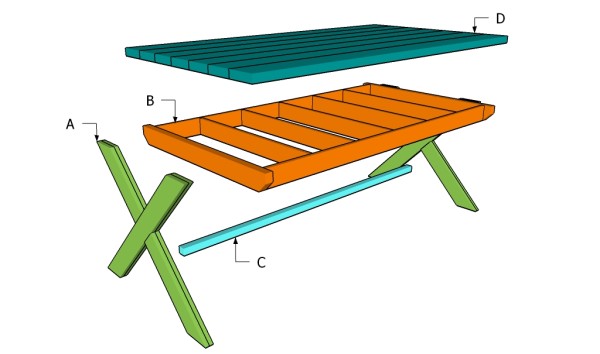
Building a x-shaped table
Top Tip: Building a table with x-shaped legs is a complex project, but the end result will most certainly add value to your backyard. Work with attention and invest in high quality materials.
Building a table with x-shaped legs

Building the x-shaped legs
The first step of the project is to build the legs of the table. As you can easily notice in the plans, we recommend you to cut both ends of the legs at 45 degrees.
Use 1×4 lumber to build the legs, in order to get a professional result. Attach the trims to the exterior of the x-shaped legs, in order to get a nice appearance.
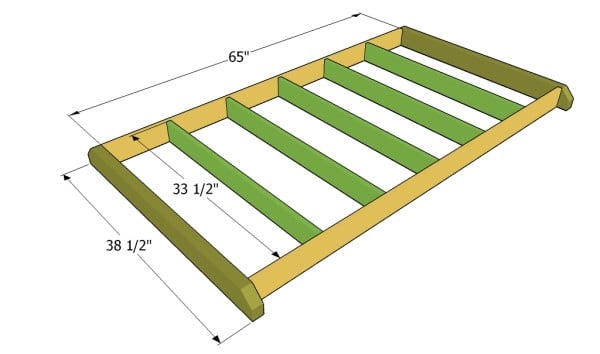
Building the frame of the table
Next, we recommend you to build the frame of the table, as shown in the plans. In order to get a professional result, we recommend you to build the end components out of 2×4 lumber and the rest of the components using 1×4 lumber.
Make sure you place the supports equally-spaced, if you want to get a proper result. Drill pocket holes at both ends of the components and lock them together with 1 1/4″ screws.
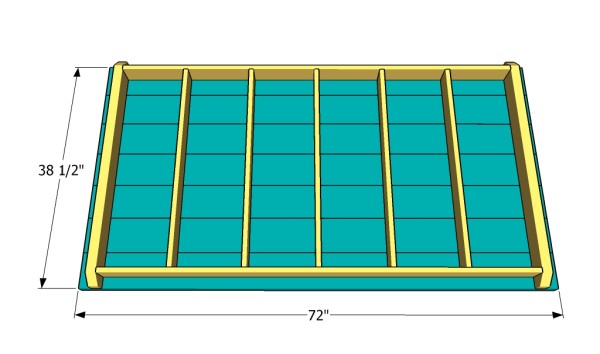
Attaching the tabletop
The next step of the project is to attach the tabletop to the frame. As you can easily notice in the image, we recommend you to lay the 2×6 slats on a level surface, making sure you don’t leave any space between them.
Drill pocket holes through the supports and insert screws into the tabletop slats. It is essential to insert many screws, in order to create a proper bond between the frame and the tabletop.
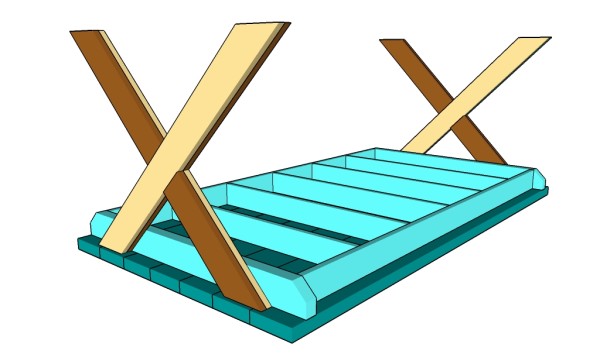
Attaching the legs
Afterwards, you should attach the x-shaped legs to the frame of the wooden table. Align the legs at both ends, drill pilot holes and insert several screws into the frame of the table.
Top Tip: Use a spirit level to check if the legs are perfectly plumb before inserting the screws. Work with attention as the rigidity of the structure is essential for the success of the project.
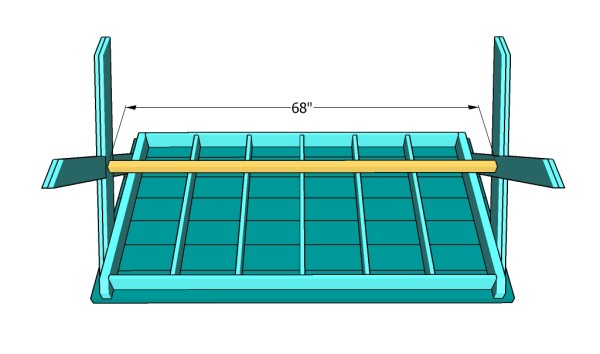
Fitting the stretcher
One of the last steps of the project is to attach the stretcher between the two sides of the table. As you can see in the plans, we recommend you to cut a piece of 2×2 lumber and to lock it into place with galvanized screws.
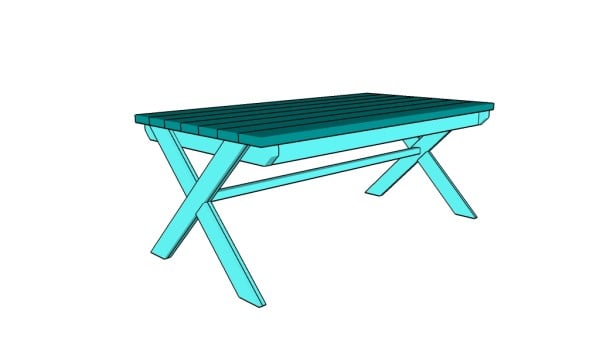
X legs table plans
One of the last steps of the woodworking project is to take care of the finishing touches. Therefore, fill the pilot holes with wood putty and smooth the surface with 120-grit sandpaper.
Top Tip: In order to protect the lumber from water damage, we recommend you to cover the components with several coats of paint. Place the wooden sawhorse table in a proper location and move it whenever necessary.
This woodworking project was about x leg table plans. If you want to see more outdoor plans, we recommend you to check out the rest of our step by step projects. LIKE us on Facebook and Google + to be the first that gets out latest projects.


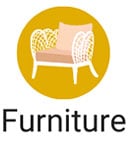


3 comments
Hi could this be done with a concrete top? I would love a concrete top with X legs
No, this table will not hold the additional weight of the concrete top.
perhaps you could use 4 x 4 or 6 x 6 posts.